A nocturnal primate found in Southeast Asia, the slow loris is one of the only venomous mammals on Earth — and they're on the brink of extinction.
There’s no denying the adorability of their saucer-like eyes, cute little faces, and soft fur. However, the slow loris is not having as much fun as it looks. They are being driven to extinction and essentially tortured, thanks to some online videos that appear harmless at first.
We see people that appear to be keeping these primates as pets and tickling them so they raise their arms into the air. It’s pretty cute until you realize that the slow loris is not, in fact, loving it. They are attempting to deploy a defense mechanism that has lost its effectiveness for a very sad reason.
The slow loris the only venomous primate in the world, and stores its venom in a pair of brachial glands in its elbow.
When threatened, it raises its arms high above its head, extracts the venom from the gland, then uses it to deliver a toxic bite. Illegal online sellers of these endangered primates remove the loris’ teeth before the sale as pets and they often do so with nail clippers or wire cutters — and without anesthesia.






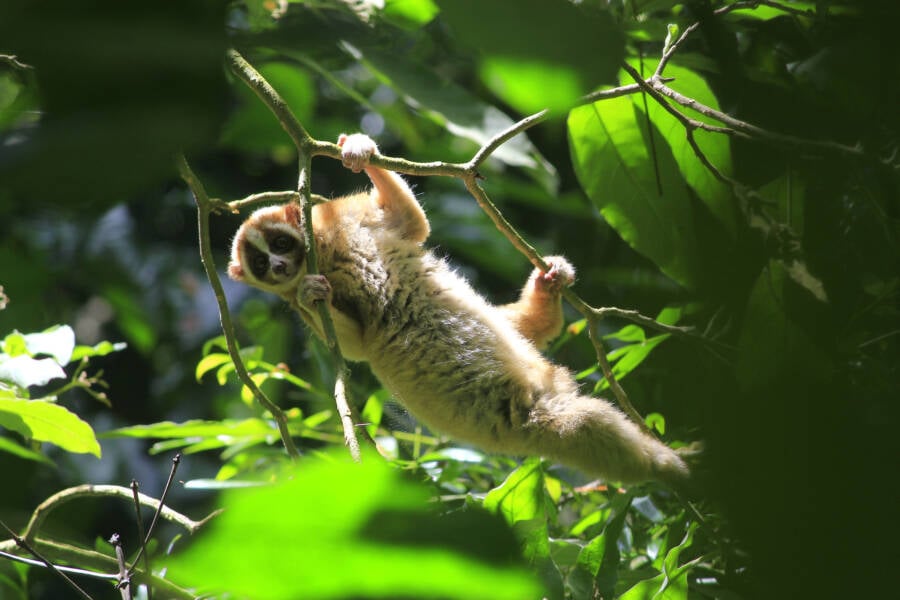
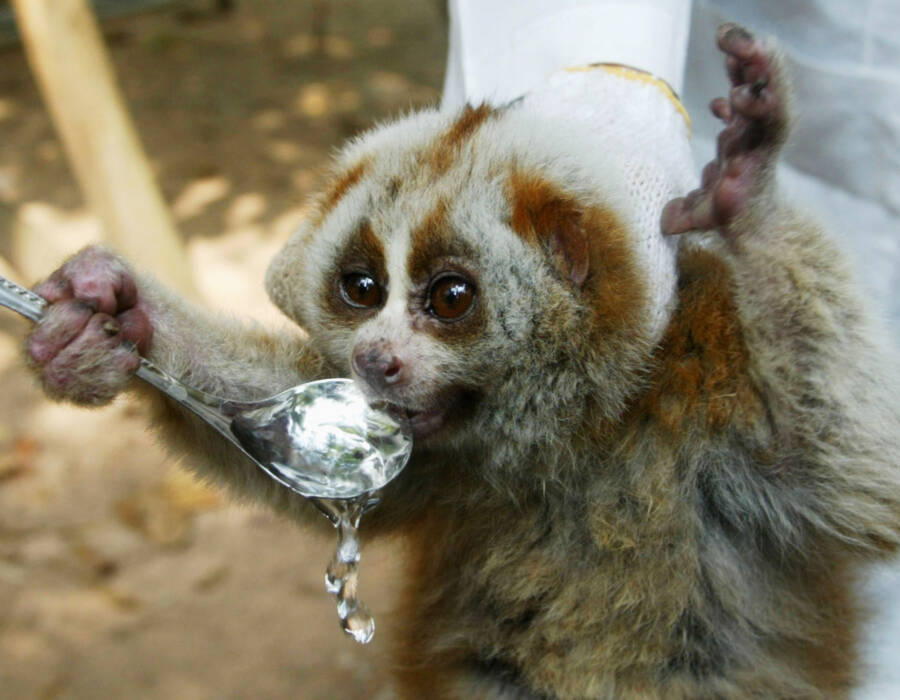

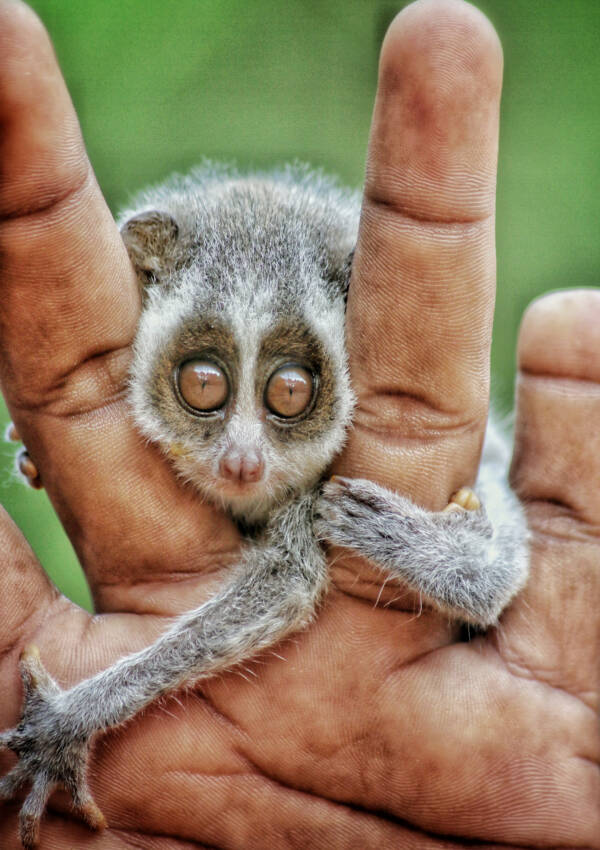
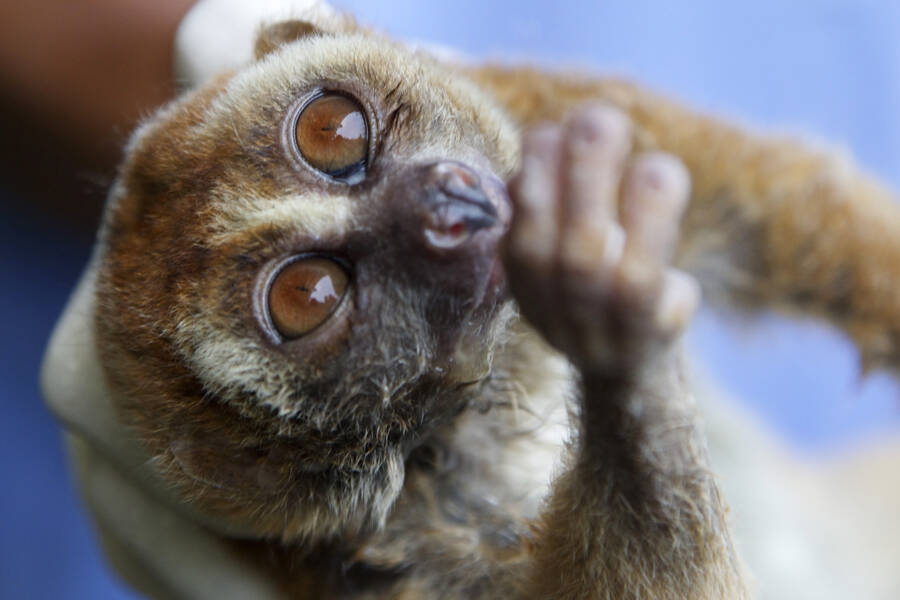
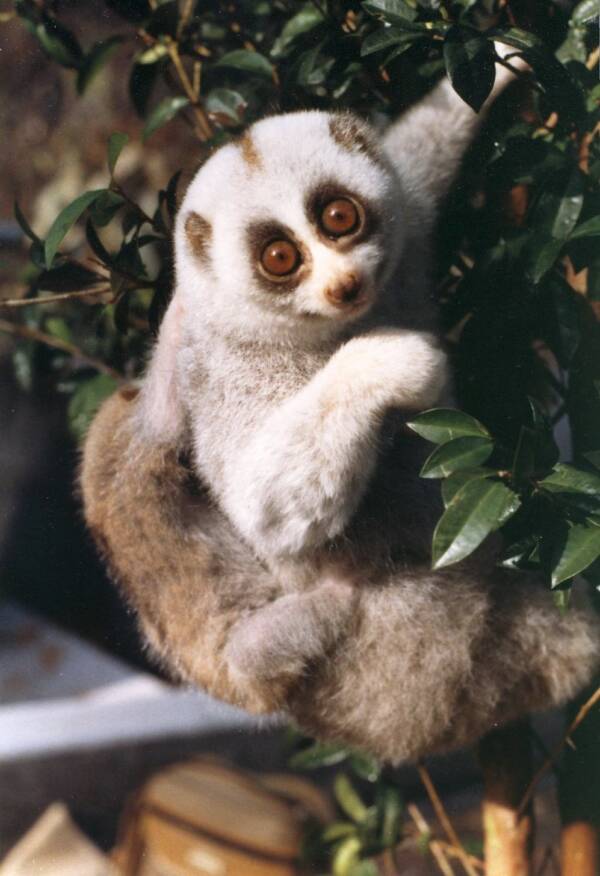

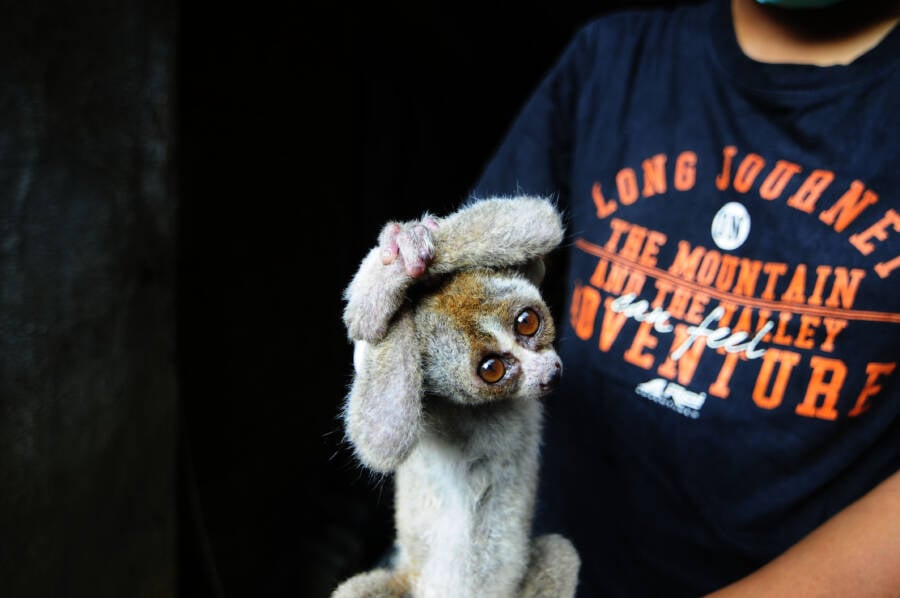



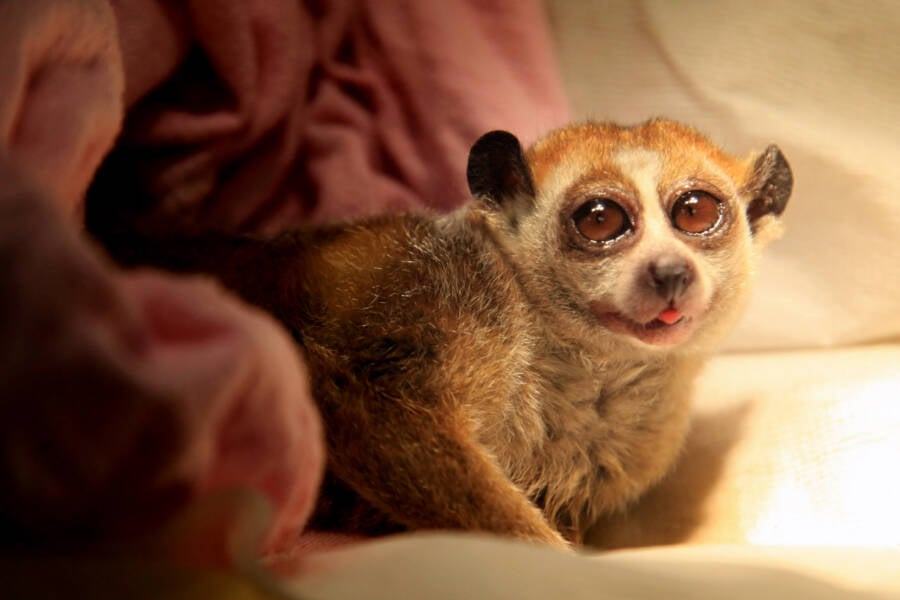

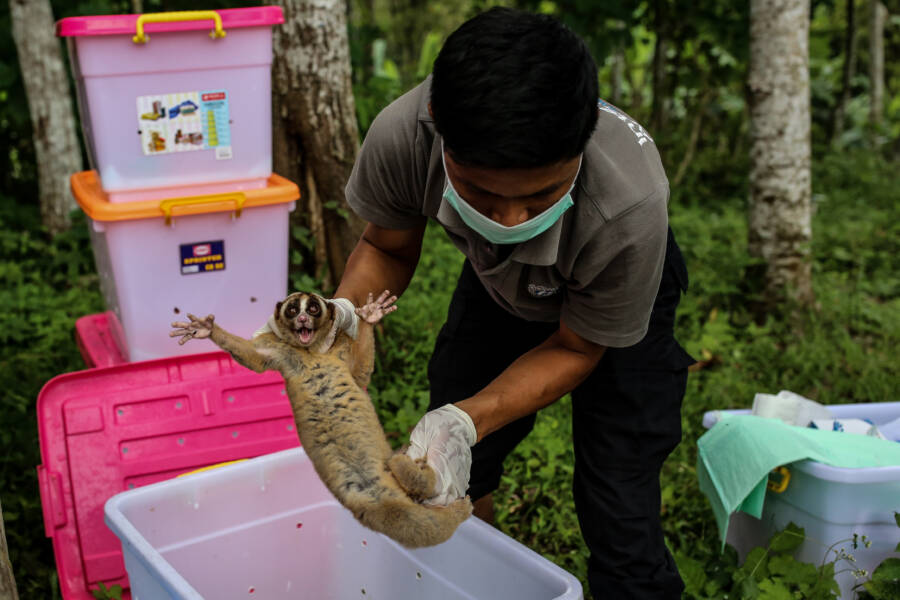
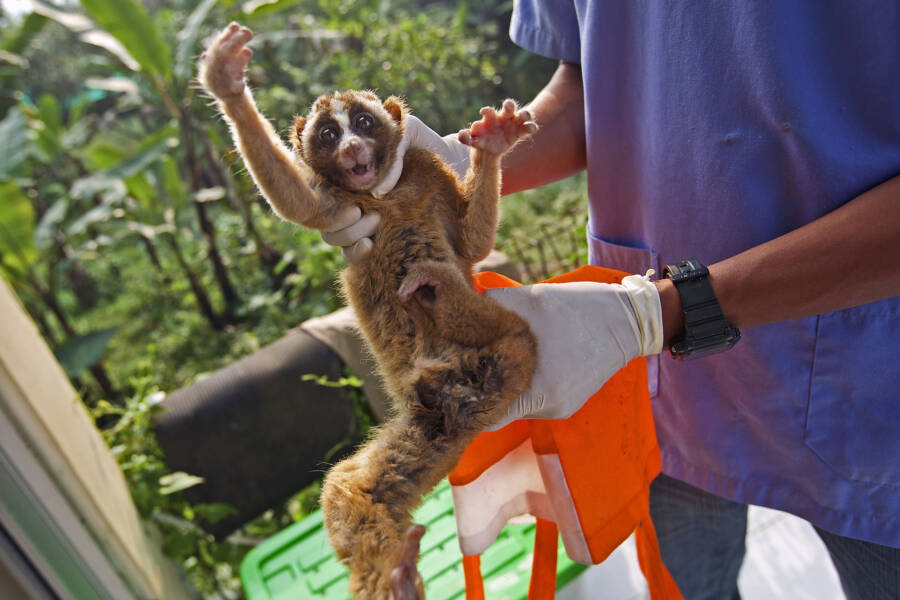

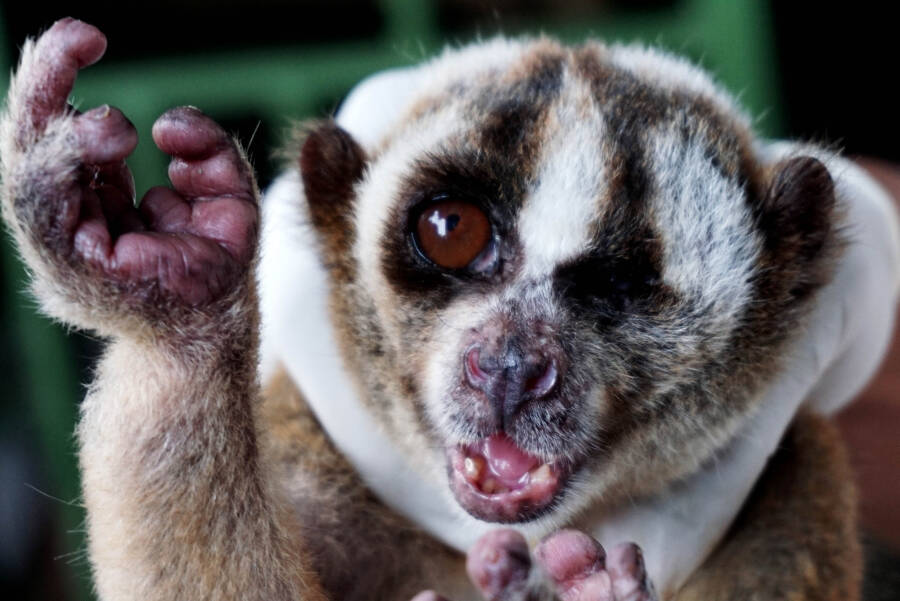
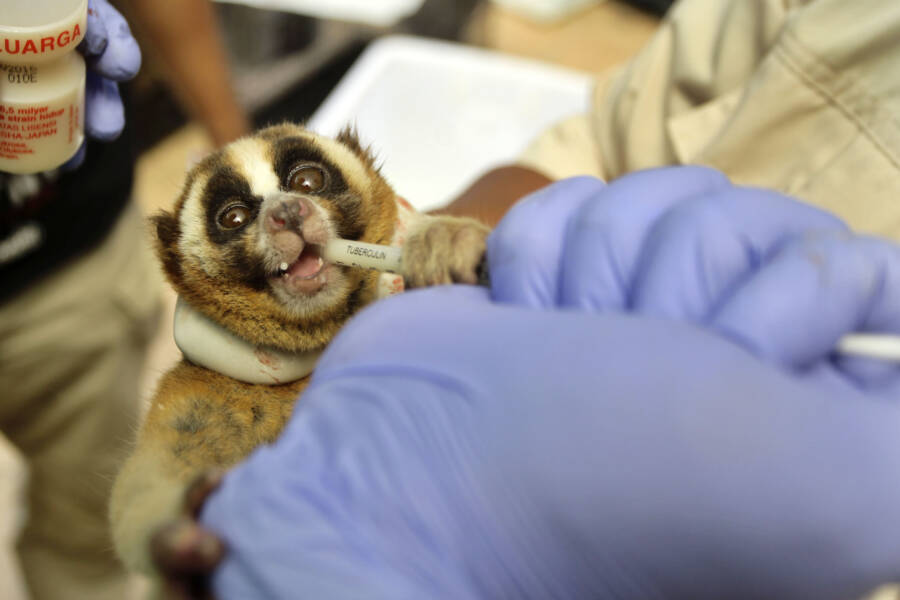

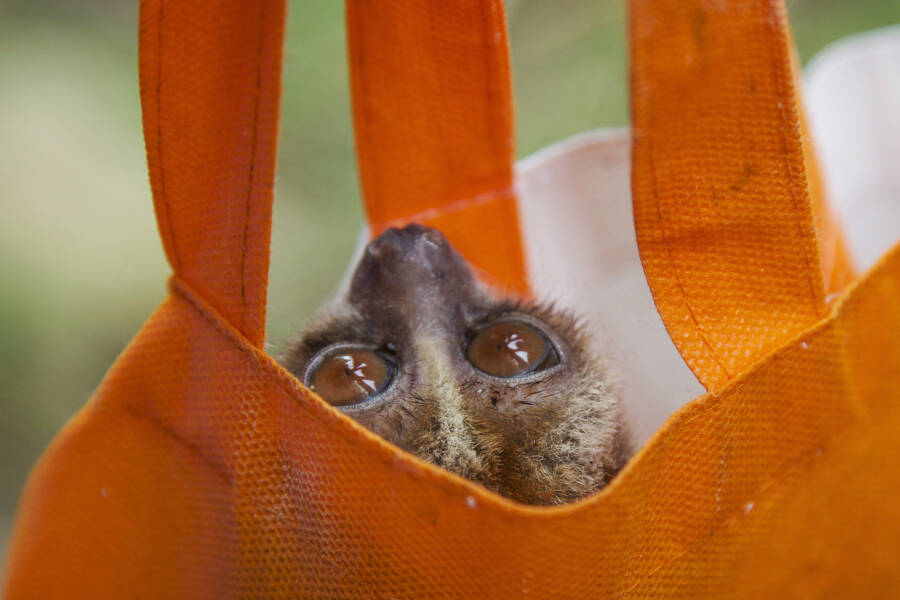

Like this gallery?
Share it:
And if you liked this post, be sure to check out these popular posts:
1 of 28
A slow loris munching on a grub. Jefta Images / Barcroft Media via Getty Images
2 of 28
A loris in its cage at a sanctuary for endangered animals confiscated from illegally poachers who were selling them as pets in Bogor, Indonesia. Ed Wray/Getty Images
3 of 28
A baby slow loris named Pasar at the International Animal Rescue sanctuary in Ciapus, Java. 2016. IAR / Barcroft Media via Getty Images
4 of 28
Jefta Images / Barcroft Media via Getty Images
5 of 28
A six-week old and still nameless pygmy slow loris with its mother Malaga at the zoo in Szeged, Hungary, 2013. CSABA SEGESVARI/AFP via Getty Images
6 of 28
Lionel Mauritson/Wikimedia Commons
7 of 28
A slow loris climbing up a tree upon release in a National Park of Mount Salak, Indonesia by International Animal Rescue (IAR), 2016. Jefta Images / Barcroft Media via Getty Images
8 of 28
Workers give water to a slow loris at the Guangdong Wild Animal Rescue Centre on December 21, 2004 in Guangzhou, China. China Photos/Getty Images
9 of 28
A loris licks its fur at a sanctuary in Bogor, Indonesia, 2014. Ed Wray/Getty Images
10 of 28
Srinath26/Wikimedia Commons
11 of 28
Ed Wray/Getty Images
12 of 28
A loris with a baby on her back. Helena Snyder/Wikimedia Commons
13 of 28
Slow loris confiscated from an illegal market await inspection by a veterinarian in West Java, Indonesia, 2016.Jefta Images / Barcroft Media via Getty Images
14 of 28
The Javan slow loris has become one of the 25 most endangered primates in the world due to hunting and loss of forests in Indonesia. Jefta Images / Barcroft Media via Getty Images
15 of 28
Mr. Ben, a pygmy slow loris, is administered anesthetic during one of Bristol Zoo's in-house health check-up and teeth cleaning. Bristol Zoo, England, 2009. Matt Cardy/Getty Images
16 of 28
The three-year-old patient was diagnosed with some minor gum problems, and given a dose of antibiotics. Matt Cardy/Getty Images
17 of 28
The check-up and teeth cleaning is part of the zoo's standard animal husbandry and welfare procedure. Matt Cardy/Getty Images
18 of 28
Mr. Ben comes around after the anesthesia. Matt Cardy/Getty Images
19 of 28
A slow loris awaits release into the wild.Jefta Images / Barcroft Media via Getty Images
20 of 28
Andrew Gal/NurPhoto via Getty Images
21 of 28
Ed Wray/Getty Images
22 of 28
Zoologist Jarod Miller with a slow loris during an interview with host Jay Leno on April 5, 2004.Paul Drinkwater/NBCU Photo Bank/NBCUniversal via Getty Images
23 of 28
This poor guy lost an eye somewhere along his unfortunate way. Jefta Images / Barcroft Media via Getty Images
24 of 28
Jefta Images / Barcroft Media via Getty Images
25 of 28
A slow loris visits sixth graders at Frederick Douglass Academy in New York City. David Handschuh/NY Daily News Archive via Getty Images
26 of 28
A slow loris peeks out of a bag in which it is being weighed by vets at a sanctuary for the endangered animals. Ed Wray/Getty Images
27 of 28
Vladimir Buynevich/Flickr
28 of 28
Like this gallery?
Share it:




Meet The Slow Loris, The Adorable Primate On The Brink of Extinction
View Gallery
"The only reason the loris isn't biting the person holding it in the video is because it has had its teeth ripped out with pliers," said Chris Shepherd of Traffic Southeast Asia, which campaigns against the illegal sale of primates.
Increased demand for the slow loris means poachers are capturing them in the wild, taking away part of their natural rainforest defenses, and selling them to people who then almost always mistreat them, feed them poor diets, and cause the animal constant stress.
Tragically, cuteness has turned out to be a curse for this poor animal.
The Basics Of The Slow Loris

Vladimir Buynevich/Flickr
A light gray slow loris.
These primates mainly call southeast Asia home, residing in tropical rainforests, semi-evergreen forests, and swampy forests. In the wild, their average lifespan is about 17 years. They are six to ten inches in length and weigh about one pound or less.
Usually, the first thing noticed about a slow loris is its eyes. It's one of the features that endear us to the animal, as big eyes have a hard-wired association in our brains with infants. Evolutionarily speaking, we can't help but be drawn to them.
They are nocturnal, so they hunt and forage at night. Those large, forward-facing eyes help the slow loris find food in low light conditions and give it excellent depth perception, essential for navigating tree limbs. They also have a reflective layer of eye tissue called the tapetum — a tissue that cats' eyes also have.
Their fur is short and dense and is colored from grayish to light brownish to deep brown. White and black accents appear on the face, and chests are usually white as well. Most don't have much of a tail to speak of, but if they possess a small nub of one, it's usually covered by fur.
Slow lorises have dexterous hands and opposable thumbs, and the arboreal animals spend almost all their time hanging around in trees. In fact, they can hang still there for hours. They have extravascular bundles in their extremities — called retia mirabilia — which allow for greater circulation. In short, their arms and legs don't fall asleep.
When not hanging or slowly crawling from branch to branch, slow lorises sleep in the daytime rolled up snug in a ball.
Of course, trees are where the food is; fruits and gums make up close to 70 percent of their diet. Insects and other small prey make up for the rest. Oddly, they do not eat any leaves, but will occasionally lick them for their moisture.
Defenses, Mating, And History Of Slow Lorises
Slow lorises are one of the cutest primates on earth, a fact that has driven the poor animal close to extinction thanks to both careless and ruthlessly cruel humans.
The slow loris' intricate defense system is four-fold. They employ crypsis, which is the ability to avoid being detected by other animals and predators. Ways to do this are by camouflage or mimicry — such as hanging very still off a tree limb — and by being most active at night.
They are known to raise their arms over their head to mimic the expanded hood of a striking cobra. This act is assisted by the fact that they have extra vertebrae and can move in a more snake-like fashion when they need to really emphasize this threat. They also emit a strong odor when provoked that suggests they are not pleasant to eat.
Furthermore, as mentioned, the slow loris also has a venomous bite that uses secretions from its brachial glands that mix with its saliva. This bite can cause anaphylactic shock — even death — in humans.
Females sometimes "park" their babies for safety by mixing up their venom secretion and licking the babies' fur. This helps keep predators at bay while the moms are busy foraging. Slow lorises have single or twin births, but with twins, one baby is oftentimes not as large or healthy as the other and dies.
Lorises are not immune to their own species' venom. If they are bitten by another slow loris in a fight, they will likely die.
The international trafficking of slow lorises began when 18th-century Dutch explorers brought home lorises from their voyages to southeast Asia. The species likely got its name from the Dutch word loeris meaning clown. However, if this name was given because of the loris's markings or behavior is unknown.
Tickling Is Torture And The Impact Of 'Selfie Tourism'
A short video on the illegal and torturous trade of the slow loris by the advocacy group International Animal Rescue.
The International Animal Rescue (IAR) founded the "Tickling Is Torture" campaign to raise awareness about what's happening to the slow loris. In addition to causing enormous stress to the animals, the viral videos of human tourists tickling or otherwise "playing" with the animal are making people think that it's okay to purchase one as a domesticated pet, something that is definitely illegal.
While the lorises in these videos may appear fine, they are actually suffering — as is the entire species. The slow loris is in danger of extinction and individual people and human activity more broadly are most definitely to blame.
Unfortunately, slow lorises are also slaughtered in Cambodia as a folk cure for stomach issues, broken bones, and even sexually transmitted diseases. There is absolutely no scientific evidence that these "cures" help any human ailments. Lorises are also losing their habitats to deforestation, especially in their native Vietnam, making them even more vulnerable to exploitation.
But mostly, these animals are the victims of illegal trafficking. Slow lorises with clipped teeth cannot be released back into the wild because they are unable to hunt. IAR has a rescue center on the island of Java for slow lorises who are rescued from poachers or neglectful, illegal owners.
Now that you've read about the sad plight of the slow loris, prepare to be fascinated by 29 of the weirdest animals in the world. Then, check out our gallery of Quokkas, the endangered, smiling marsupial that Australia hopes to protect with a selfie-driven internet marketing campaign.